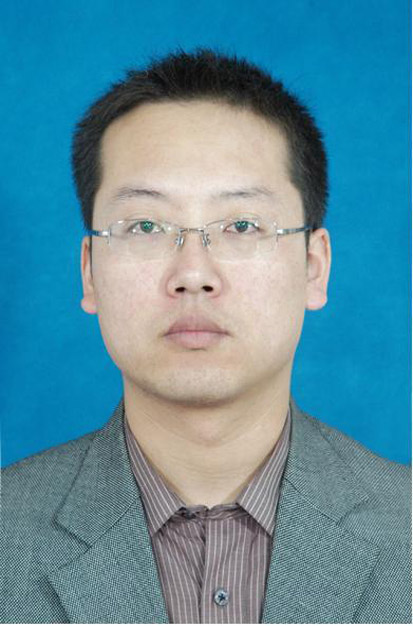硕士研究生导师柴国华简介
2022-07-12 18:15:02 来源:44118太阳成城集团 浏览数:0

基本情况:
柴国华,教授,“泰山学者”青年专家、中国科学院“青年促进会会员”,资源与环境系副主任。
联系电话:18563917910;邮箱: chaigh@qau.edu.cn
研究方向:植物营养、植物生态修复
学习工作经历:
2019.8- 教授,青岛农业大学
2015.1-2019.7 副研究员,中科院青岛生物能源与过程研究所
2010.3-2014.12 助理研究员,中科院青岛生物能源与过程研究所
2006.9-2009.12 博士,中国农科院油料作物研究所
(2009.3-2009.9英国洛桑研究所,访问学习)
2003.9-2006.7 硕士,西北农林科技大学/中科院遗传发育研究所
1999.9-2003.7 学士,内蒙古民族大学
教学授课情况:(1)生态学;(2)专业英语及科技论文写作。
科学研究:先后主持国家重点研发计划子课题、国家转基因重大专项子课题、国家自然基金(青年、面上)、山东省重大研发计划、中科院知识创新和青岛市应用基础等项目12项,累计经费600余万元。目前以第一或通讯作者在New Phytol, Plant Physiol, Plant Cell Environ等国际主流期刊SCI论文19篇,累计影响因子超过100;参编著作2部,申请专利8件(已授权3件),受邀在国际学术会议做报告6次,培养博、硕士研究生14人。
获奖及社会兼职等情况:
1.“青岛市自然科学奖”,二等奖,2018,(第二位);
2. Frontier in Plant Science客座副主编;
3. Scientific Reports编委;
4. 兰州大学、温州大学外聘研究生导师;
5. 中国农科院创新团队外聘专家。
代表性学术论文(#第一作者;*通讯作者):
1. Wang D#, Chai G#, Xu L, Yang K, Zhuang Y, Yang A, Liu S, Kong Y, Zhou G. Phosphorylation-mediated inactivation of C3H14 by MPK4 positively regulates bacterial-triggered immunity in Arabidopsis. Plant Physiology 2022, kiac300. doi: 10.1093/plphys/kiac30
2. Tang X, Wang C, Chai G, Wang D, Xu H, Liu Y, He G, Liu S, Zhang Y, Kong Y, Li S, Lu M, Sederoff R, Li Q, Zhou G. Ubiquitinated DA1 negatively regulates vascular cambium activity through modulating the stability of WOX4 in Populus. Plant Cell. 2022, koac178. doi: 10.1093/plcell/koac178.
3. Chai G#, Qi G#, Wang D#, Zhuang Y#, Xu H, Bai Z, Bai MY, Hu R, Wang ZY, Zhou G, Kong Y. The CCCH zinc finger protein C3H15 negatively regulates cell elongation by inhibiting brassinosteroid signaling. Plant Physiology 2022, 189(1): 285-300.
4. Wang C, Liu N, Geng Z, Ji M, Wang S, Zhuang Y, Wang D, He G, Zhao S, Zhou G*, Chai G*. Integrated transcriptome and proteome analysis reveals brassinosteroid-mediated regulation of cambium initiation and patterning in woody stem. Horticulture Research 2022, 9:uhab048.
5. Zhuang Y, Chen S, Lian W, Xu L, Wang D, Wang C, Meng J, Tang X, Xu H, Wang S, Du L, Zhang Y, Zhou G*, Chai G*. A high-throughput screening system for Populus wood-associated transcription factors and its application to lignin regulation. Frontier in Plant Science 2022, 12:715809.
6. Chai G*, Lu M, Yang X, Demura T, Li W and Li Q. Editorial: wood development and physiology in a changing climate. Frontier in Plant Science 2022, 13:906736.
7. Zhuang Y, Lian W, Tang X, Qi G, Wang D, Chai G*, Zhou G*. MYB42 inhibits hypocotyl cell elongation by coordinating brassinosteroid homeostasis and signaling in Arabidopsis thaliana. Annals of Botany 2022, 129(4):403-413.
8. He H, Song X, Jiang C, Liu YL, Wang D, Wen SS, Chai G, Zhao S, Lu M. The role of senescence-associated gene101 (PagSAG101a) in the regulation of secondary xylem formation in poplar. Journal of Integrative Plant Biology. 2022, 64(1):73-86.
9. Wang D, Chen Y, Li W, Li Q, Lu M, Zhou G*, Chai G*. Vascular cambium: the source of wood formation. Frontier in Plant Science 2021, 12:700928.
10. Zhang Y, Xu H, Kong Y, Hua J, Tang X, Zhuang Y, Bai Y, Zhou G*, Chai G*. Wood forming tissue-specifc expression of PdSuSy and HCHL increases holocellulose content and improves saccharifcation in Populus. Journal of Forestry Research. 2021, 32:1681-1688.
11. Tang X, Wang D, Liu Y, Lu M, Zhuang Y, Xie Z, Wang C, Wang S, Kong Y, Chai G*, Zhou G*. Dual regulation of xylem formation by an auxin-mediated PaC3H17-PaMYB199 module in Populus. New Phytologist 2020, 225(4): 1545-1561.
12. Wang D, Xu H, Huang J, Kong Y, AbuQamar S, Yu D, Liu S, Zhou G*, Chai G*. The Arabidopsis CCCH protein C3H14 contributes to basal defense against Botrytis cinerea mainly through the WRKY33-dependent pathway. Plant Cell & Environment. 2020, 43(7):1792-1806.
13. Zhuang Y, Wang C, Zhang Y, Chen S, Wang D, Liu Q, Zhou G*, Chai G*. Overexpression of PdC3H17 confers tolerance to drought stress depending on its CCCH domain in Populus. Frontier in Plant Science 2020, 10:1748.
14. Meng J, Wang B, He G, Wang Y, Tang X, Wang S, Ma Y, Fu C, Chai G*, Zhou G*. Metabolomics integrated with transcriptomics reveals redirection of the phenylpropanoids metabolic flux in Ginkgo biloba. Journal of Agriculture and Food Chemistry 2019, 67(11):3284-3291.
15. Xu H, Ding A, Chen S, Marowa P, Wang D, Chen M, Hu R, Kong Y, O'Neill M, Chai G*, Zhou G*. Genome-wide analysis of sorghum GT47 family reveals functional divergences of MUR3-like genes. Frontier in Plant Science 2018, 9:1773.
16. Shi D, Ren A, Tang X, Qi G, Xu Z, Chai G, Hu R, Zhou G, Kong Y. MYB52 negatively regulates pectin demethylesterification in seed coat mucilage. Plant Physiology 2018, 176(4):2737-2749.
17. Chai G#, Kong Y, Zhu M, Yu L, Qi G, Tang X, Wang Z, Cao Y, Yu C, Zhou G.Arabidopsis C3H14 and C3H15 have overlapping roles in the regulation of secondary wall thickening and anther development. Journal of Experimental Botany 2015 66(9): 2595-609.
18. Tang X, Zhuang Y, Qi G, Wang D, Liu H, Wang K, Chai G*, Zhou G*. Poplar PdMYB221 is involved in the direct and indirect regulation of secondary wall biosynthesis during wood formation. Scientific Reports 2015, 5:12240.
19. Chai G#, Wang Z, Tang X, Yu L, Qi G, Wang D, Yan X, Kong Y, Zhou G. R2R3-MYB gene pairs in Populus: evolution and contribution to secondary wall formation and flowering time. Journal of Experimental Botany 2014, 65(15):4255-69.
20. Chai G#, Qi G, Cao Y, Wang Z, Yu L, Tang X, Yu Y, Wang D, Kong Y, Zhou G. Poplar PdC3H17 and PdC3H18 are direct targets of PdMYB3 and PdMYB21, and positively regulate secondary wall formation in Arabidopsis and poplar. New Phytologist 2014, 203(2):520-534.
21. Yu L, Shi D, Li J, Kong Y, Yu Y, Chai G, Hu R, Wang J, Hahn MG, Zhou G. CELLULOSE SYNTHASE-LIKE A2, a glucomannan synthase, is involved in maintaining adherent mucilage structure in Arabidopsis seed. Plant Physiology 2014,164(4):1842-56.
22.Chai G#, Hu R, Zhang D, Qi G, Zuo R, Cao Y, Chen P, Kong Y, Zhou G. Comprehensive analysis of CCCH zinc finger family in poplar (Populus trichocarpa). BMC Genomics 2012, 13:253.
23. Chai G#, Bai Z, Wei F, King GJ, Wang C, Shi L, Dong C, Chen H, Liu S. Brassica GLABRA2 genes: analysis of function related to seed oil content and development of functional markers. Theoretical and Applied Genetics 2010, 120(8):1597-61
- 上一篇: 硕士研究生导师宋祥云简介
- 下一篇: 魏文良简介

